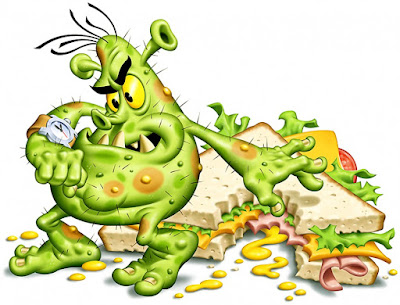CONTAMINATION AND HEALTH
Contamination is the process of transferring impure, dirty
or infectious matter from items to another, person to person or from one source
to the other- thereby rendering it harmful, unwholesome, poisonous and
unhealthy. It is a common, unpleasant and dangerous situation that affects the
atmosphere, environment, food, drinks, and water supply; and finally afflicts
the human/animal/plant life exposing them to destruction, to danger and health
disorders. The entire human race and environment are under threat of contamination
arising from planned or unplanned, direct, indirect and abnormal human and natural
activities, disasters, pollution as well as improper disease control and health
care practices. In addition, acts of carelessness, negligence, ignorance,
poverty, lack of information and education, irregular and poor government legislation, and manufactures attitude to the management of wastes and toxic
materials as well as bad infrastructural planning all play their role in
encouraging contamination.
Waste products from industries, homes sewage, agricultural
chemicals, flooding and general bad sanitation can easily contaminate food
products and water supply for various uses. Good sanitation should be implemented
at all levels of production, storage and distribution of consumables. In homes
and communal environment, care must be taken to prevent modes of contamination
and infection spread by maintaining proper ventilation, and over-crowding, make
wise use of personal effects and common facilities like clothing, eating and
drinking utensils, bathing/toileting/swimming and laundry use, and other items
that could transmit infections. In health areas, there should be proper
practices with screening person to person handling, blood and fluid handling,
hand-washing techniques, use of clothing and protective materials and equipment,
bed spacing and isolation sterilization methods, refuse disposals and high
professional inputs so as to prevent the risk of contaminating where ever infectious
diseases are present or suspected, proper management should be applied and
close contacts should be minimized or disallowed. Coughing, sneezing, sweating,
kissing, sexual contacts are all easy ways of being contaminated with one infection
or the other.
Be cautious, detect, report and treat infections promptly no
matter how minor it may appear. Vaccinations and immunizations are safety
guards for disease prevention, make use of them. Eating and bad eating habits
are other easy ways of being contaminated or infected, so foods like
vegetables, fruits, meat, fish, seafoods, milk and dairy products, canned food
can easily be contaminated and they should be handled and taken with care
starting from purchasing, storage, preparation and consumption. Making sure
they are healthy, within acceptable consumption date and that there is no
alteration in colour, taste, odour and packaging. Report any abnormal symptoms
noticed after the consumption of suspected contaminated food promptly.
Domestic animals as well as rodents, cockroaches, flies,
ticks fleas etc, are also agents of food, water and body contamination. So care
must be applied in this area to tame he pets and eradicate the pests.
All items come in contact with contaminated blood, body fluid,
pus, sweat, mucus and other discharges should be properly disposed preferably
by burning them.
Keep watch over your health; avoid contacts with suspected
and obviously contaminated agents. Enjoy a clean healthy living.
Original Write-up by
Mrs. C. E. Akuwudike



.jpg)


Comments
Post a Comment
Leave a comment here.